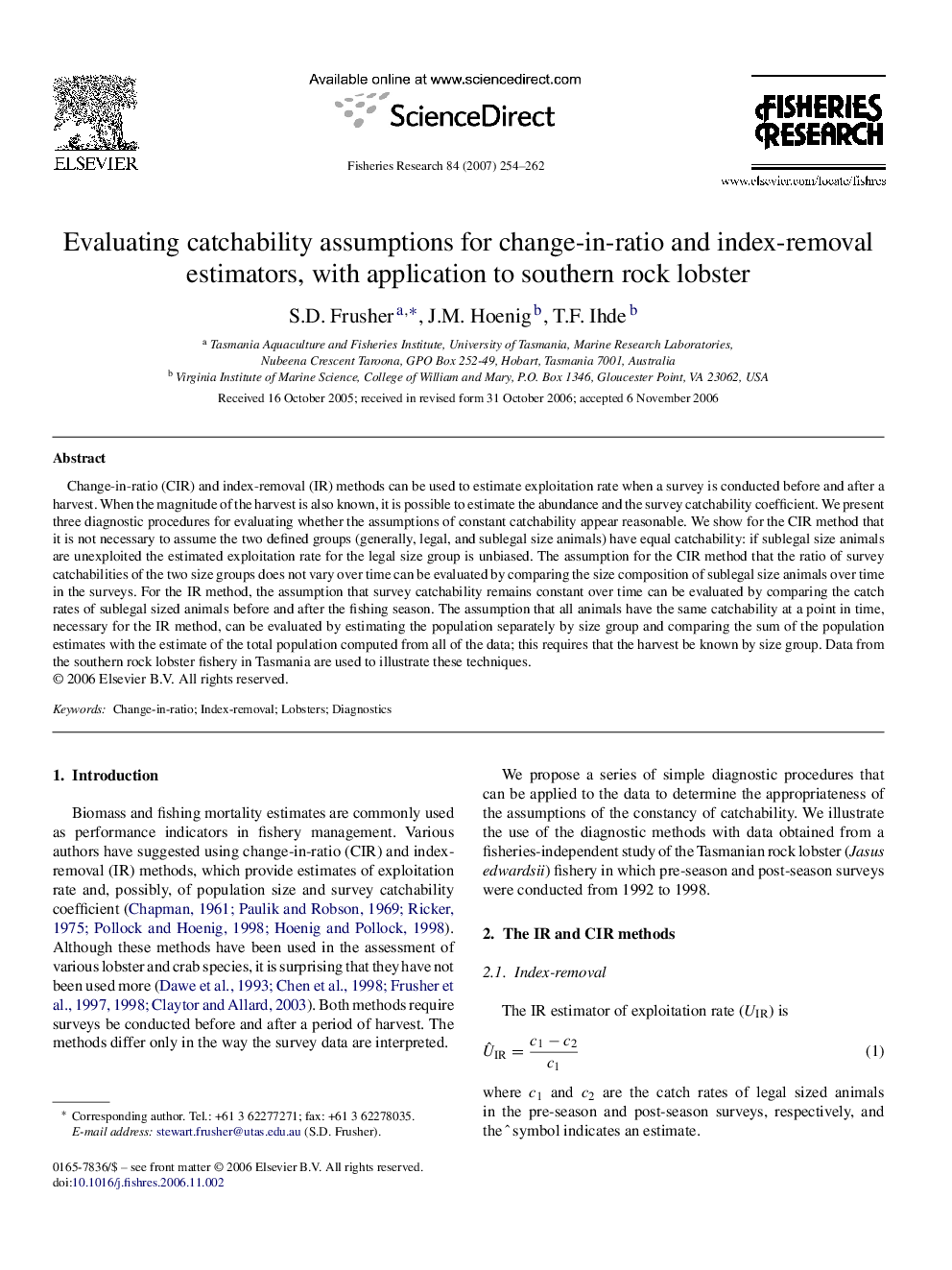| کد مقاله | کد نشریه | سال انتشار | مقاله انگلیسی | نسخه تمام متن |
|---|---|---|---|---|
| 4544585 | 1327202 | 2007 | 9 صفحه PDF | دانلود رایگان |
عنوان انگلیسی مقاله ISI
Evaluating catchability assumptions for change-in-ratio and index-removal estimators, with application to southern rock lobster
دانلود مقاله + سفارش ترجمه
دانلود مقاله ISI انگلیسی
رایگان برای ایرانیان
کلمات کلیدی
موضوعات مرتبط
علوم زیستی و بیوفناوری
علوم کشاورزی و بیولوژیک
علوم آبزیان
پیش نمایش صفحه اول مقاله

چکیده انگلیسی
Change-in-ratio (CIR) and index-removal (IR) methods can be used to estimate exploitation rate when a survey is conducted before and after a harvest. When the magnitude of the harvest is also known, it is possible to estimate the abundance and the survey catchability coefficient. We present three diagnostic procedures for evaluating whether the assumptions of constant catchability appear reasonable. We show for the CIR method that it is not necessary to assume the two defined groups (generally, legal, and sublegal size animals) have equal catchability: if sublegal size animals are unexploited the estimated exploitation rate for the legal size group is unbiased. The assumption for the CIR method that the ratio of survey catchabilities of the two size groups does not vary over time can be evaluated by comparing the size composition of sublegal size animals over time in the surveys. For the IR method, the assumption that survey catchability remains constant over time can be evaluated by comparing the catch rates of sublegal sized animals before and after the fishing season. The assumption that all animals have the same catchability at a point in time, necessary for the IR method, can be evaluated by estimating the population separately by size group and comparing the sum of the population estimates with the estimate of the total population computed from all of the data; this requires that the harvest be known by size group. Data from the southern rock lobster fishery in Tasmania are used to illustrate these techniques.
ناشر
Database: Elsevier - ScienceDirect (ساینس دایرکت)
Journal: Fisheries Research - Volume 84, Issue 2, April 2007, Pages 254-262
Journal: Fisheries Research - Volume 84, Issue 2, April 2007, Pages 254-262
نویسندگان
S.D. Frusher, J.M. Hoenig, T.F. Ihde,